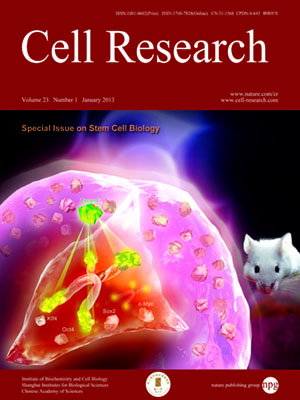
Volume 23, No 1, Jan 2013
ISSN: 1001-0602
EISSN: 1748-7838 2018
impact factor 17.848*
(Clarivate Analytics, 2019)
Volume 23 Issue 1, January 2013: 33-48
REVIEWS
A blueprint for engineering cell fate: current technologies to reprogram cell identity
Samantha A Morris1,2,3 and George Q Daley1,2,3
1Stem Cell Transplantation Program, Division of Pediatric Hematology and Oncology, Manton Center for Orphan Disease Research, Howard Hughes Medical Institute, Children's Hospital Boston and Dana Farber Cancer Institute, Boston, MA, USA
2Department of Biological Chemistry and Molecular Pharmacology, Harvard Medical School, Boston, MA, USA
3Harvard Stem Cell Institute, Cambridge, MA, USA
Correspondence: George Q Daley,(george.daley@childrens.harvard.edu)
Human diseases such as heart failure, diabetes, neurodegenerative disorders, and many others result from the deficiency or dysfunction of critical cell types. Strategies for therapeutic tissue repair or regeneration require the in vitro manufacture of clinically relevant quantities of defined cell types. In addition to transplantation therapy, the generation of otherwise inaccessible cells also permits disease modeling, toxicology testing and drug discovery in vitro. In this review, we discuss current strategies to manipulate the identity of abundant and accessible cells by differentiation from an induced pluripotent state or direct conversion between differentiated states. We contrast these approaches with recent advances employing partial reprogramming to facilitate lineage switching, and discuss the mechanisms underlying the engineering of cell fate. Finally, we address the current limitations of the field and how the resulting cell types can be assessed to ensure the production of medically relevant populations.
Cell Research (2013) 23:33-48. doi:10.1038/cr.2013.1; published online 1 January 2013
FULL TEXT | PDF
Browse 4802


